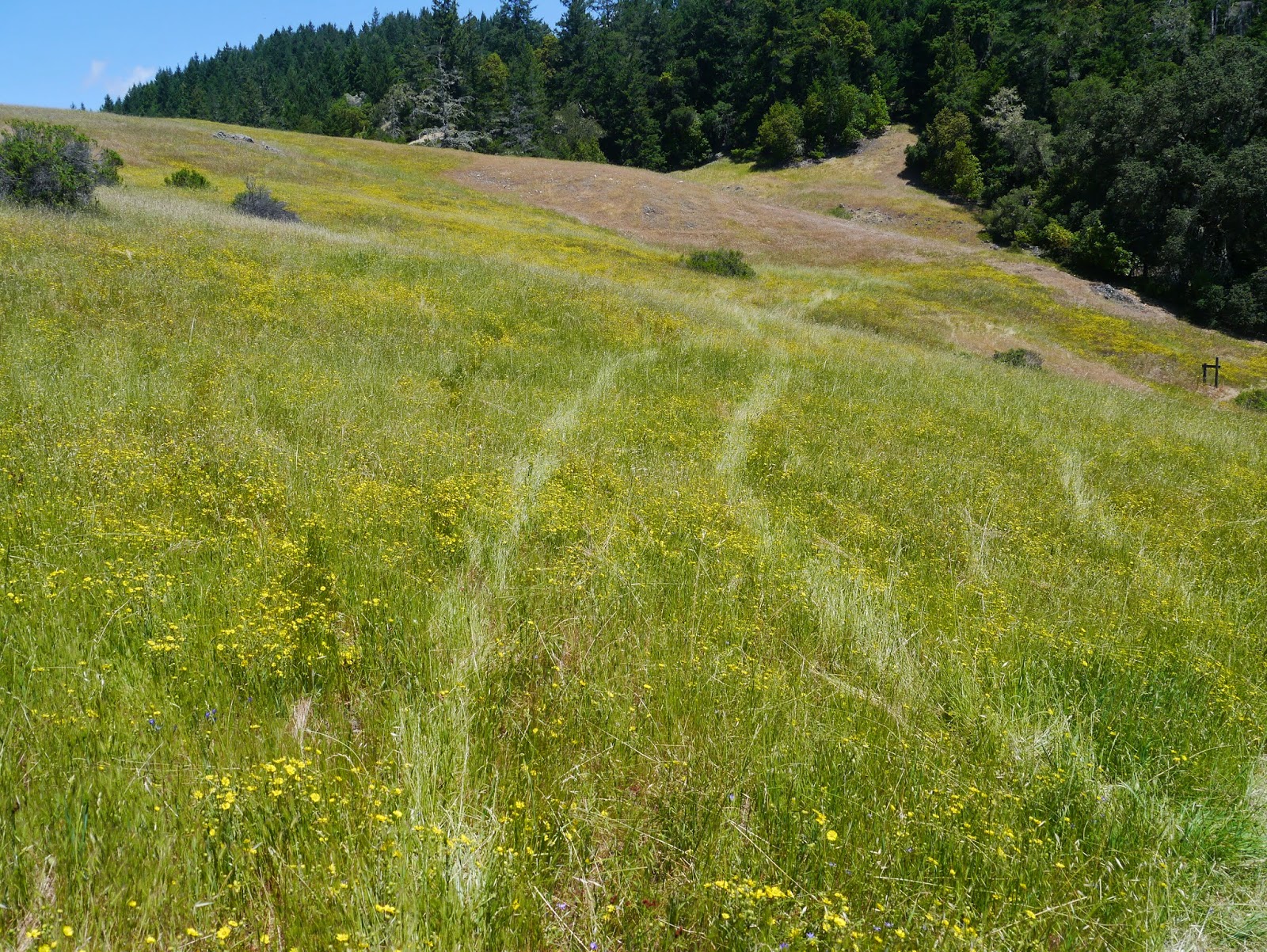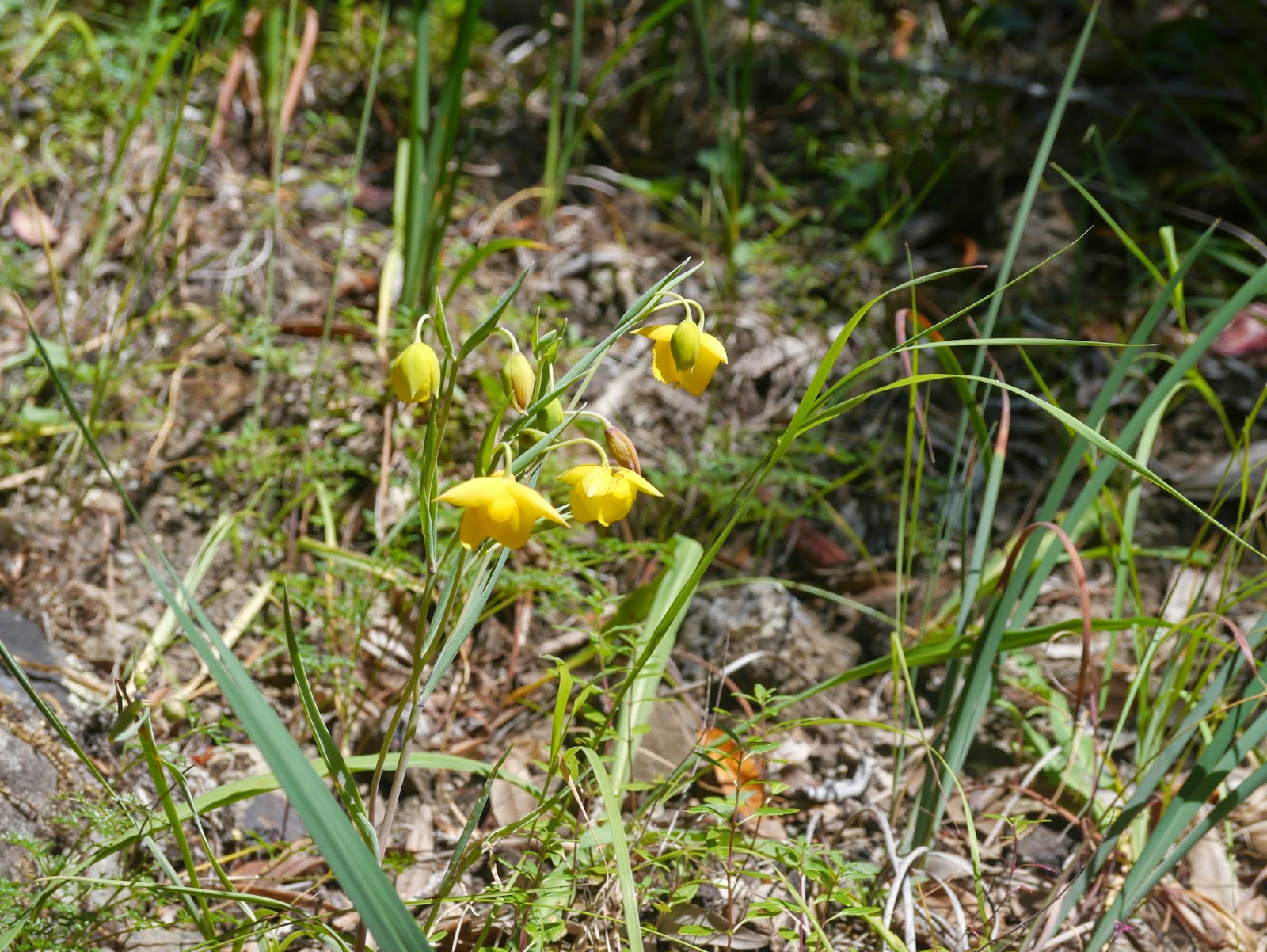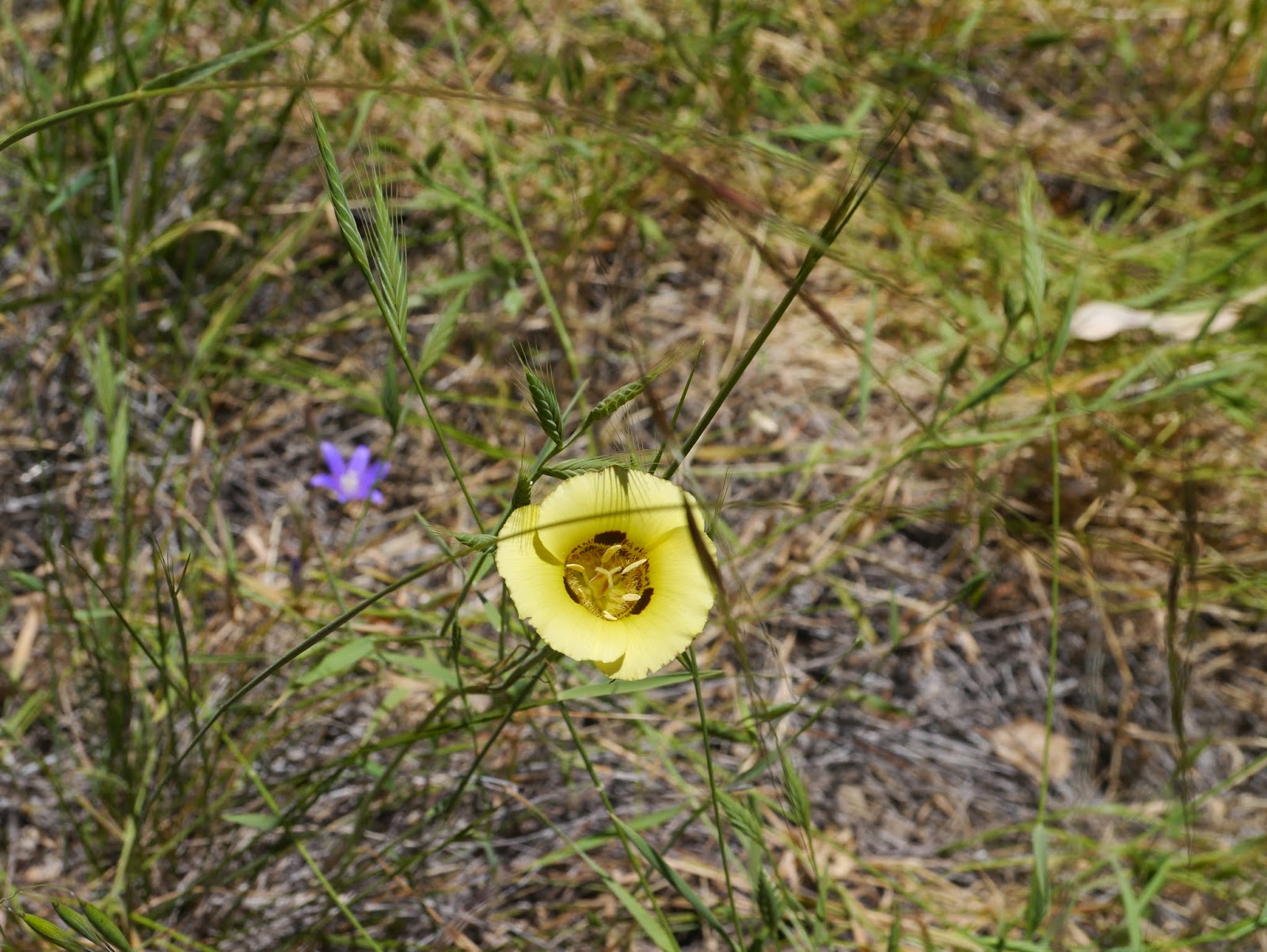Summer is coming in on the wings of the furred Umber Skipper butterflies...
It is coming in the flowering of the olive trees, which burst into bloom during last week's heat wave, and which also plunged our hills over the edge of green and headlong into their usual gold, and sent me running to the alder-lined Lagunitas creek to plunge my own feet into the water. I am a child of fog and breeze and our Bay's gentle cooling breath. When the air reaches 90 degrees, dry as a bone and as still, I feel like our chaparral plants, wanting to send all my energy down to my roots and go dormant, right then and there.

Though our summers are not wet and green and fecund like the summers we model our cultural conception of seasons upon—the East Coast or Northern European four-season round of orange leafed autumn : snowy winter : gentle spring bloom : green humid wet summer— our dry, gold-grassed summer season (in which rain occurs only in the dreams of the drought tolerant buckeyes as they drop all their leaves in August) was once the time of the great seed harvest. Native women up and down the state would wade out into the mature grassy hills with seed beaters and baskets. A lot of the wildflowers that feed our eyes and hearts with their colorful summer beauty provided literal sustenance for the First People of this land—the clarkias, the blue-eyed grasses, the buttercups, the poppies, the tarweed. And the very act of seed-beating was a dispersal mechanism, as was the burning of grasslands to promote healthier, thicker growth. When European settlers first arrived here, the grasslands were veritable carpets of beauty and food.
In 1850, California argonaut William Perkins wrote—“The plains at this season (the middle of April) are literally covered with flowers. No garden can compare in beauty to the banks of the Estanislao [Stanislaus]. I think I never witnessed such a profusion of colors, and such brilliancy of hues; and this, not confined to small and isolated spots, but the whole country is one immense flower bed. The hills look like gigantic bouquets, and the llanos like a huge Persian carpet” (quote found in this fantastic document on The Edible Seeds and Grains of California).
In the spirit of the seed-gathering summer season, I have been drawn recently to the round form of the woven basket, both in the weaving of little wild-mandalas and, this past weekend, when I learned the traditional twining technique of soft basket-weaving, used by the Bedouin people for flat saddle rugs and tents, and by the Pomo people of northern California for ceremonial items such as hats.
So below are a few baskets for you, real and metaphoric, and the seeds they have gathered into their folds.
This creek-rock, worn-glass, alder-leaf, mugwort, cow-parsnip flower circle around a dead cabbage white butterfly, was made in the heart of last week's heat wave, by the Lagunitas creek, with my wonderful 12-year-old poetry student. It feels now like a basket holding the first flush of summer, the holiness of our perennial creeks (which are few compared to the now-dry annual streams!) and all that they provide us in the midst of the dry and the heat.
The fir-branch tripod over our fire, for boiling tea water and roasting vegetables, looks like the inverted beginning of a basket, and the fire herself, of course—a finished one! An embered basket.
Inside the basket of my weekend are the many stars, scattered like so many silver seeds through the night; the big waning face of the moon shining on my own face through the live oak branches where I slept; the herd of feral horses who came to visit the little area of forest where I and a few other women slept, snuffing and whinnying, stomping and munching and otherwise making sleep impossible for a little while. In the deep dark, a gathering of six horses tromping their hooves near your bed is a wee bit unnerving, as much as I love horses, and at one point I had to leave my bed because one of them came right up to it and proceeded to nose about at my pillow. Then he lowered his head in the way of horses and took a nap with his nose inches above my sleeping bag. Now, in the daylight, I wish I'd stayed and felt the sweet warmth of his breath upon me, but in the middle of a dark and starry night, in the middle of an oak wood, a horse is a dark and shadowed shape, the mind is dream-strung—and it is easier said than done to remain flat on the ground while horses prance around...
Needless to say, it was a night whose warp was woven with sacred horse-hair. When they left, I dreamt of them. In the morning, you could see the weft of their tracks through the tall grass.

Over the basket-round fire, I brewed up a pot of very special tea to be shared through the morning, as the robins sang, the kestrel hunted, the quail called out to one another, the black phoebes hawked for insects in the gentle shade. I like to call it the Rose & Smoke Caravan Tea, perfect for a weekend of beds under the stars with horses circling round, of nomadic basket-weaving and firesmoke. It's recipe was created by the beautiful Nao Sims of Honey Grove. It is full of garden rose petals and cardamom pods, chaga mushroom, Earl Grey tea, a smattering of the smoky Russian Caravan. What better way to greet the morning?
The basket of the weekend was full of the sweet strength of circled women, wandering together with weaving in hand. It was full too of the new wildflowers of early summer.
The Mariposa Lily...

... her sister in the Lily family, the Golden Fairy Lantern, whose three petals never fully open, but rather hang down toward the earth, closed like hands. (Both of these wild lilies were prized for their edible bulbs, as opposed to seeds).
The creekside western azalea, who was blooming last month, continued to open, queenly and intoxicating, toward the sky. The western azalea has a special affinity for magnesium high serpentine soils, often presenting a stunning contrast between heady blooms and a barren, rocky substrate.
Yet another little butterfly came to visit, resting on my back for a time, while we gathered for lunch down at the waterfall, swam, learned to finger-weave. Women weaving together by the water. What could be sweeter?

One of my tiny creations from the weekend (and a first attempt, hence the bumps!)... It is a gathering basket for the red alder shade, the dry flush of early summer, the scent of azalea, the whuffing breath of nighttime, moonlit-nomad horses, the embered heart of the campfire, singing to the wanderer and the weaver in all of our souls.
And as a nod to the true artists of the Basket, the First People of the land in Sonoma where most of these photos came from, the Kashaya Pomo...
 |
| Pomo Cooking basket, from the Phoebe Hearst Museum |
Such baskets need no words, for they are already the story of the whole wild land in one circular metaphor.
















Goodness, another rich post! A child of fog & breeze, I feel you. And your story of the horse coming in the night! As usual, you write with great depth, leaving it impossible for the reader to disengage.
ReplyDeleteBe well x
Thanks for the soul-nourishment! A reminder to me that, though my solitude is wonderful, a gathering of women by the creek is exquisite! Beautiful little basket with infinite space for gathering.
ReplyDeleteMy Dearest Sylvia~ You get up to the best things! This post is a fairytale, wild horses and wild flowers, basket weaving by rivers and campfire cauldrons. It is a rich and textured tale from an old and magical book, that begins "once upon a time..." What an exquisite life you are creating~What a beautiful one you are.
ReplyDelete